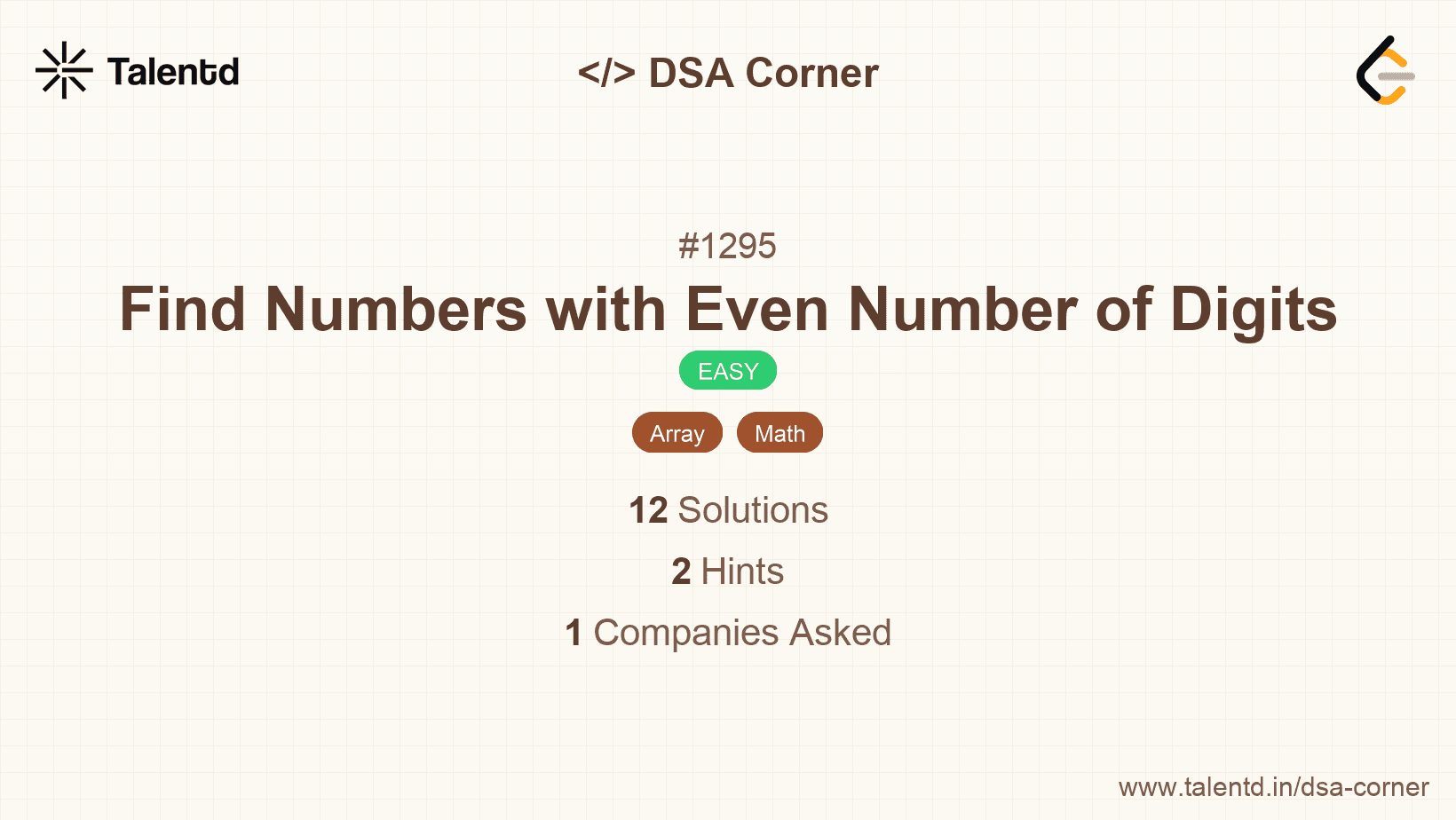
Sponsored
Sponsored
This approach involves converting each number into a string to easily count the number of digits.
Time Complexity: O(n), where n is the number of elements in the array.
Space Complexity: O(1), as we're using a fixed amount of extra space.
1def findNumbers(nums):
2 count = 0
3 for num in nums:
4 if len(str(num)) % 2 == 0:
5 count += 1
6 return count
7
8nums = [12, 345, 2, 6, 7896]
9print(findNumbers(nums))This Python function iterates over the list, converts each number to a string, and increments the count if the length of the string (number of digits) is even.
The logarithmic approach calculates the number of digits by using logarithms; specifically, the base-10 logarithm of a number is taken, and the result is incremented by 1 to get the total number of digits.
Time Complexity: O(n), the array is processed once.
Space Complexity: O(1), constant space utilized.
1
class Program {
static int FindNumbers(int[] nums) {
int count = 0;
foreach (var num in nums) {
if ((int)Math.Floor(Math.Log10(num) + 1) % 2 == 0) {
count++;
}
}
return count;
}
static void Main() {
int[] nums = {12, 345, 2, 6, 7896};
Console.WriteLine(FindNumbers(nums));
}
}In C# the logarithmic approach uses Math.Log10() and Math.Floor() to determine the number of digits directly, checking for even count.